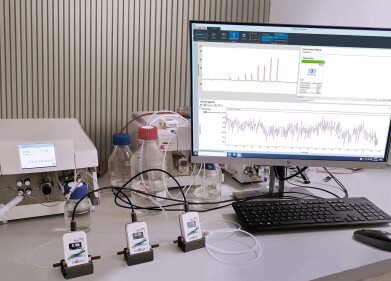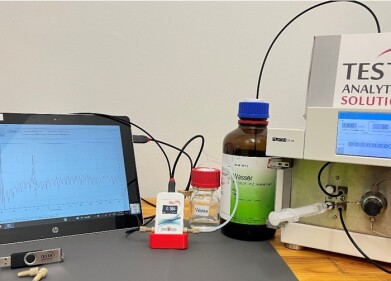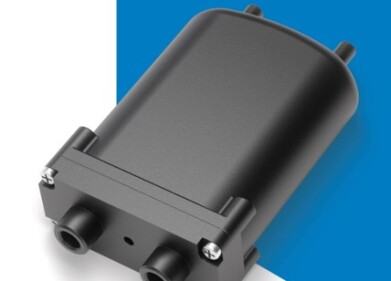Chromatography
Determination of Sulfide in Mining Leachates Using Ion Chromatography
Dec 11 2008
The collected gas is then determined spectrophotometrically at 230 nm or
after reaction with methylene blue at 600 nm. However, this offline method is very time-consuming and prone to interferences by other substances present. According to Metrohm coupling a gas diffusion cell to an IC with subsequent spectrophotometric detection is an online alternative yielding faster and more accurate results. The H2S gas derived from acidification of the sample enters a gas diffusion cell where it selectively diffuses through the hydrophobic membrane into a non- UV-absorbing acceptor solution. There it is deprotonated to the IC-compatible hydrogen sulfide anion (HS–).
Potentially interfering species cannot pass the membrane. Due to the selectivity of the gas diffusion cell and the direct ultraviolet absorption of the hydrogen sulfide anion at 230 to 250 mm (no post-column reagent is necessary), the overall analysis time is less than eight minutes.
Digital Edition
Lab Asia 31.6 Dec 2024
December 2024
Chromatography Articles - Sustainable chromatography: Embracing software for greener methods Mass Spectrometry & Spectroscopy Articles - Solving industry challenges for phosphorus containi...
View all digital editions
Events
Jan 22 2025 Tokyo, Japan
Jan 22 2025 Birmingham, UK
Jan 25 2025 San Diego, CA, USA
Jan 27 2025 Dubai, UAE
Jan 29 2025 Tokyo, Japan



















